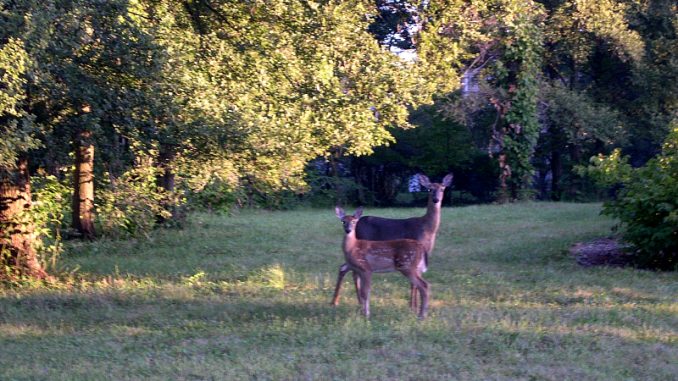
You can use deer’s own intelligence against them to trick them right out of your yard.
Just as they learn where to find safe, reliable food sources, you can “train” deer to avoid any specific area.
The tactic to use is called “negative conditioning” and it works well to deter deer from your yard. But it’s important to choose a strategy that outsmarts them continuously.
Although scare tactics such as dogs barking, canned noise and scarecrows can be a part of negative conditioning, they all have limited effects, as deer quickly learn there’s no real harm associated with those threats.
Fences also have limitations. Deer can easily jump over any fence lower than 8 feet and few neighborhoods will approve of a fence of that height.
A product that combines scent and taste deterrents will be most effective in keeping deer away from suburban landscapes because deer will remember the unpleasant smell and taste of your backyard’s food source and they’ll pass by your yard rather than eat something they’ve already been conditioned to learn will be distasteful.
A commercially available produce that does that is Bobbex Deer Repellent. Testing by the Connecticut Agricultural Experiment Station proved Bobbex is more effective than nine other commercial repellents (including coyote urine), scoring a 93 percent in protection, second only to a fence at 100 percent.
The all-natural repellent blends six scents, including rotten eggs, garlic, fish, clove oil and vinegar (among other things) to mimic predator scents, classifying it as an effective fear repellent.
It also tastes terrible to deer but is good for plants because it contains elements high in nitrogen and phosphorus. The product dries clear, is harmless to humans and pets, won’t burn plants and its odor, after 24 hours, is undetectable to humans, but deer can still smell it.
Be the first to comment